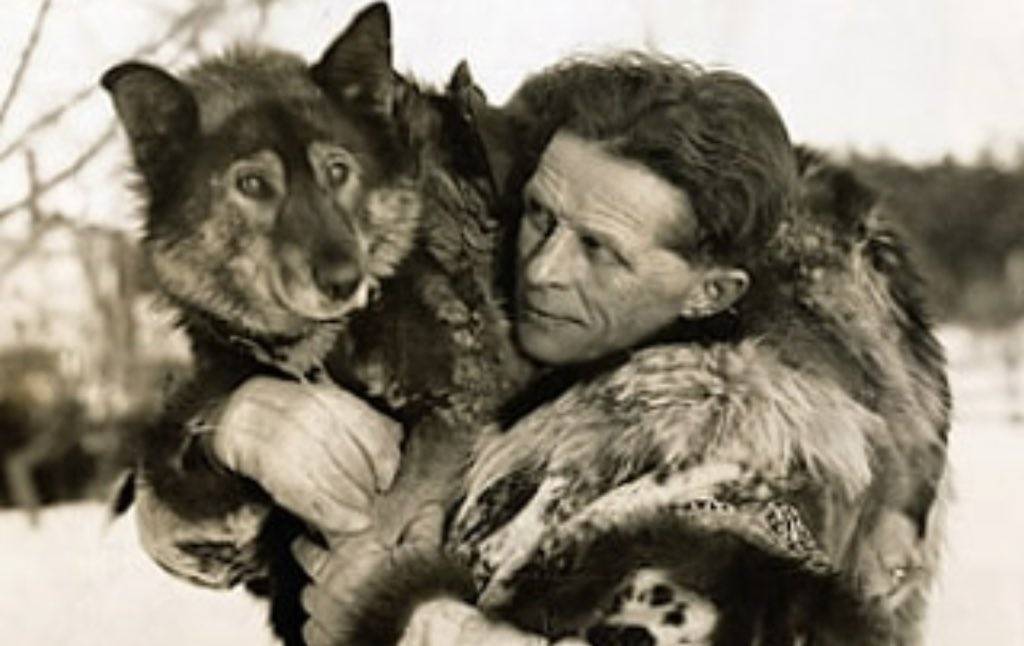Sled-dog racer Leonard Seppala holds his lead dog, Togo, in his arms. During the 1925 serum run to deliver diphtheria antitoxin to Nome, Alaska, Togo led his pack on a harrowing 365-mile journey across buckling sea ice. The medicine was eventually passed on to Balto's team, who only had to take it the last 55 miles. 10 months after the serum was delivered, a statue of Balto was erected in Central Park, New York.
Men of the Japanese Antarctic Expedition of 1910-1912, photographed around 1911 on the deck of their ship Kainan Maru, accompanied by two sled dogs.
The expedition, which marked the first Antarctic exploration by a non-European nation, was under the leadership of Army Reserve Lieutenant Nobu Shirase. Taking place simultaneously with two other major Antarctic expeditions led by Roald Amundsen and Robert Falcon Scott, the Japanese expedition has been relatively overlooked in polar history. Initially, the expedition failed to land in its first season, leading to a revision of its original objective to reach the South Pole.
The revised mission involved less ambitious goals. However, the second season proved more successful, allowing the expedition to return safely to Japan without any casualties or loss of life.
Knud Rasmussen harkens back to the adventurous era of exploration when rugged individuals embarked on quests to unveil uncharted territories and the people inhabiting them. Consequently, Rasmussen may not be prominently featured on explorer rankings, as his enduring legacy prioritizes knowledge acquisition over athletic feats.
Born to a missionary, Rasmussen's formative years were spent in Greenland, where he fully immersed himself in the local language, honed skills in dog sledding, pursued hunting, and acquired expertise in the intricacies of cold-weather travel.
Following initial expeditions at the turn of the 20th century, Rasmussen firmly etched his name in history with The Thule Expeditions, a series of polar exploration and ethnographic ventures spanning from 1912 to 1933. While the majority of these endeavors focused on Greenland, the fifth Thule expedition, arguably the most remarkable, encompassed a daunting 20,000-mile journey spanning from Greenland to Siberia, marking the first European dogsled traverse of the Northwest Passage.
For this monumental achievement and his subsequent ethnographic contributions, Rasmussen earned the title of the "Father of Eskimology." Despite his lack of formal education, Rasmussen's profound impact on anthropology, polar exploration, and the understanding of Arctic native cultures reverberates on a global scale.


